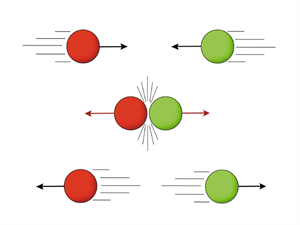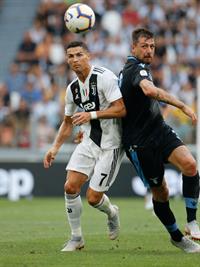PDF chapter test TRY NOW
The first law and the second law state the changes in the motion of an object when an external force is applied and determines the force with various methods.
The third law of motion generally states that "For every action, there is always an equal and opposite reaction".
If an object applies force to another, the second object reacts by applying force to the first. The two forces exerted by the objects always have an equal magnitude but reacts in the opposite direction.

Note that the forces never act on the same object but different objects.
Illustrations:
1. Football game
During a football match, a player sometimes clashes with the other team player while attempting to kick the ball with more energy.

Each of them uses force on the other, and both of them get hurt due to their actions. Hence, there are two forces at work, rather than just one. Action and reaction forces are the names given to these two opposing forces.
2. Expanding spring balances
Consider two spring balances joined together. One end of the balance A is fixed on a wall for rigid support. The other free end of the spring balance will be labelled as B. The scale readings of both spring balances will be the same when a force is applied through B.

It implies that the force exerted by balance B on A is equal, but it is in the opposite direction of the force exerted by A on B. These two forces are known as action and reaction, which always acts on two different objects simultaneously.
Rocket balloon activity:
This simple activity requires a balloon, a thread, straw and tape.

Procedure
- A big rubber balloon is taken and inflated.
- The neck of the balloon is tied using a thread.
- The straw is then fixed on the surface of the balloon using tape.
- A thread is taken and passed through the straw by holding one end of the thread in hand.
- Now, both the ends of the thread are fixed with some distance between the walls.
- The thread tied to the neck of the balloon is now removed and thus allowing the air to escape through the mouth of the balloon.
Inference
When the air escapes out from the balloon at one end, the straw moves to the opposite direction along with the balloon. This shows that the air that escaped out of the balloon is action, and the movement of the straw is its reaction.

Hence, it is concluded that the action and the reaction forces are opposing forces that act in the opposite direction.
Reference:
https://image.shutterstock.com/z/stock-photo-turin-italy-august-campionato-italiano-di-seriea-juventus-vs-lazio-cristiano-1166184622.jpg - Photography by cristiano barni
